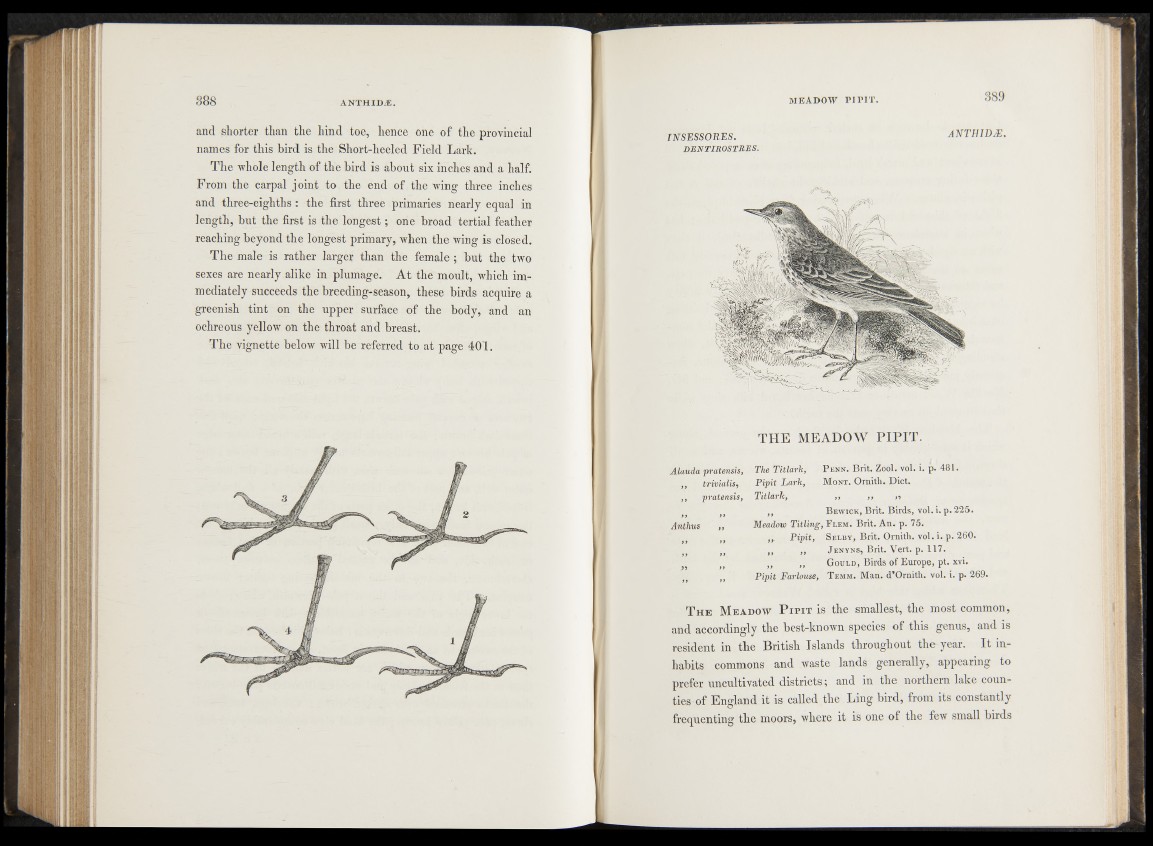
and shorter than the hind toe, hence one of the provincial
names for this bird is the Short-heeled Field Lark.
The whole length of the bird is about six inches and a half.
From the carpal joint to the end of the wing three inches
and three-eighths : the first three primaries nearly equal in
length, but the first is the longest; one broad tertial feather
reaching beyond the longest primary, when the wing is closed.
The male is rather larger than the female ; but the two
sexes are nearly alike in plumage. At the moult, which immediately
succeeds the breeding-season, these birds acquire a
greenish tint on the upper surface of the body, and an
ochreous yellow on the throat and breast.
The vignette below will be referred to at page 401.
1NSESSORES. ANTHIDJE.
DENTIROSTR ES.
TH E MEADOW P IP IT .
The Titlark, P enn. Brit. Zool. vol. i. p. 481.
Pipit Lark, M ont. Ornith. Diet.
Titlark, ,, ,, „
,, B ewick, Brit. Birds, vol. i. p. 225.
Meadow Titling, F lem. Brit. An. p. 75.
Pipit, S elby, Brit. Ornith. vol. i. p. 260.
,, ,, J enyns, Brit. Vert. p. 117.
,, ,, G ould, Birds of Europe, pt. xvi.
Pipit Farlouse, T emm. Man. d’Ornith. vol. i. p. 269.
Alauda pratensis,
,, trivialis,
,, pratensis,
Anthus ,,
T h e M e a d o w P i p i t is the smallest, the most common,
and accordingly the best-known species of this genus, and is
resident in the British Islands throughout the year. It inhabits
commons and waste lands generally, appearing to
prefer uncultivated districts; and in the northern lake counties
of England it is called the Ling bird, from its constantly
frequenting the moors, where it is one of the few small birds